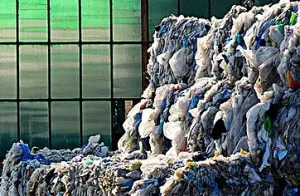Germany – Researchers from Ludwig Maximilian University (LMU) in Munich, Germany, have developed a technique for automatically recognising the polymer constituents of plastic waste. The breakthrough will ‘improve the efficiency of recycling and reuse of the various types of plastic’, says project leader Professor Heinz Langhals.
The LMU′s patent-pending process involves exposing particles of plastic to a flash of light which causes the material to fluoresce. Photoelectric sensors then measure the intensity of the light emitted in response to the inducing photo-excitation to determine the dynamics of its decay.
′Plastics emit fluorescent light when exposed to a brief flash of light, and the emission decays with time in a distinctive pattern,′ Langhals explains. ′This means their fluorescence lifetimes are highly characteristic for the different types of polymers, and can serve as an identifying fingerprint.′
The decay data can be used to identify the plastic′s chemical nature. ′With this process, errors in measurement are practically ruled out; for any given material, one will always obtain the same value for the fluorescence half-life, just as in the case of radioactive decay,′ Langhals declares.
Tests have shown that the use of fluorescence lifetime measurements permits the identification and sorting of up to 1.5 tons of plastic per hour – opening up the possibility, says Langhals, of industrial-scale application.
For more information, visit: www.en.uni-muenchen.de
Don't hesitate to contact us to share your input and ideas. Subscribe to the magazine or (free) newsletter.



